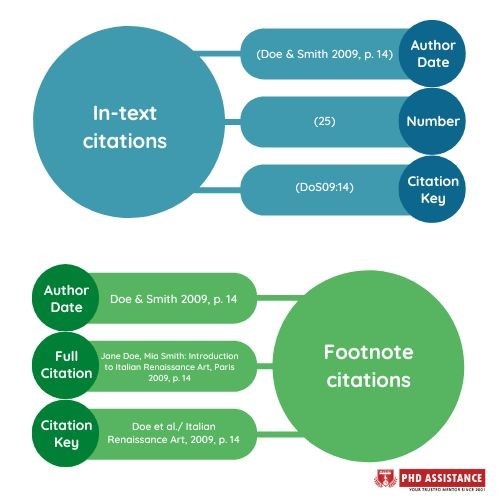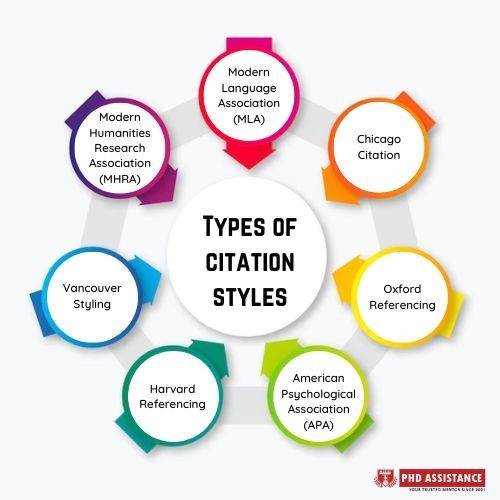Referencing an Article – Its styles and types
Introduction
Referencing plays a crucial step for an manuscript to be successfully published. If authors are not entirely accurate and meticulously thorough in providing references and citations they should recognize the study of others, accusations of plagiarism and misrepresenting the work of other academics might be unwelcome. In addition, if instructions and rules regarding references are not followed precisely and consistently, publication attempts may fail, and grades may be lower than anticipated (Tetzner, 2021).
Every scientific study expands upon prior research; even if it is on an entirely separate topic, pertinent prior studies will have influenced it. Peer-reviewed articles are required to reference and cite an article. This makes it apparent where the current study originated and makes the paper’s content more accessible for readers to comprehend. The actual structure and content of the references and citations in the manuscript will vary depending on the journal we choose to submit it to; therefore, witer must consider the specifications while selecting the journal for pulication and also reviewing the Instructions before to submission is the first step.
A reference typically contains the names and initials of the authors, the title of the piece, the name of the journal, the volume and issue, the date, the page numbers, and the DOI. Refer some manuscript samples to get an idea of how the articles are referenced. Including the DOI can help connect to the right article on ScienceDirect since articles are associated to their source (if it was further published on ScienceDirect) but rather associated Scopus record. It is no longer necessary to manually compile and amend the references in any scientific article. Your references may be tracked by management software like Mendeley, allowing you to share them with the team members. By choosing the appropriate citation style for the publication you submit using the Word plugin, the programme will format the references for you. It is crucial to ensure that the reference list is being examined and amended, just as you would with any other section of your book. With expert document editing from Elsevier Author Services Language Editing, you can make sure that your references will not prevent you from being published (Elsevier, 2023).
Different types of Citation Software
Several software programmes for reference management (OTAGO, 2022).
- The Library and ITS provide support for the popular software EndNote. Both the Mac and Windows operating systems support it. All students can use EndNote for free using the Student desktop. Endnote can also be purchased on your device across Its for a modest charge training programmes offered by ITS employ EndNote.
- Zotero is free to use.
- Mendeley is free to use.
- The citation management tool BibTex is available if we use LaTex for our papers.
Main types of citations
We must be specific when referencing academic journals for readers to locate and check out the primary sources on which our thoughts and assertions are based. You have two options for citing sources in your research paper: in-text citations and endnotes (i.e., numbers within the text which relate to the page’s bottom or the paper’s end). A reference list for both formats must be included at the end of the essay (KH, 2023).

Usage of “et al.” in citations
The abbreviated form of the Latin phrase “et alii” is “et al,” which means “and others.” When referencing a source with numerous authors, the abbreviation is used. It serves a similar purpose as the Latin term “et cetera,” which is also widely used and sometimes shortened to “etc.” and signifies “and other like things” (KH, 2023).
Referencing/Citation styles
There are many different referencing styles; therefore, check the requirements for your specific requirements , or those established by the lecturer or department, before beginning any work. For example, the citation or reference format you employ, such as Chicago, APA, or Vancouver (which uses a numbered system), will determine how you structure your references (a notes-bibliography system).

Figure 2: Citation styles
In all citation styles, a brief citation, known as an in-text citation, is used in the body of the text as a pointer to the comprehensive bibliographic information that will be included later in your work in the footnotes, endnotes, reference list, or bibliography. The citation style determines the structure and vocabulary (OTAGO, 2022).
Importance of Referencing
The correctness of pertinent data conveyed in the paper and attention to detail, such as precise page numbering and author names spelt correctly, are all examples of good referencing (Santini, 2022). Reviewers consult the bibliography for a variety of purposes. As mentioned previously, spelling and punctuation require special attention. Additionally, the citation style, whether Harvard, Vancouver, or another, must adhere to the guidelines for authors set out by the relevant publication. If the most current reference is older than five years, it could not have been updated completely. Most references from one or more authors may indicate self-promotion, self-plagiarism, or the selected citation of works whose conclusions agree with the author(s).
References
- Elsevier. (2023). Author Services.
- KH, W. (2023). When to Use Author “et al.” in Citation and References.
- OTAGO, U. of. (2022). What is Referencing and why is it important?
- Santini, A. (2022). The Importance of Referencing.
- Tetzner, R. (2021). How To Write References for Academic & Scientific Research Papers.



